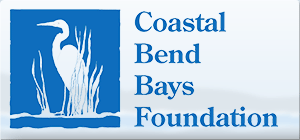To find information on the implementation plan, click on any of the links below:
- Coordination Committee
- Education & Outreach Workgroup
- Science & Technology Workgroup
- Ordinance & Regulations
- City and Infrastructure
Public Participation and the Implementation Plan
The Cole and Ropes Parks Bacteria Reduction Implementation Plan Coordination Committee (CARP) is a community elected group that will be drafting an Implementation Plan – a public plan to reduce bacteria levels at Cole and Ropes Parks. This committee and its workgroups met throughout 2012 and 2013 to develop a draft plan. If you have questions about this effort, please give us a call at 361-882-3439.
Background on Bacteria Issue
Data from the Texas Beach Watch Program show bacteria concentrations were higher than the criteria for protecting contact recreation activities, such as swimming or windsurfing, at Cole Park and Ropes Park beaches in Corpus Christi, TX. The goal of this project is to reduce bacteria levels at these beaches in order to protect people who use the beaches for contact recreation.
For information on Past Public Meetings Please Use the Dropbox Link to the right of this page. Scroll to the Cole & Ropes Parks folder and look for Public Meeting folders.
***
For more information about the Corpus Christi Bay Beaches TMDL, including an Interim Monitoring Report, and a Historical Data Review and Site Assessment, please visit: http://www.tceq.texas.gov/waterquality/tmdl/97-corpusbeachesbacteria.html
Section 303(d) of the Clean Water Act (CWA), 33 U.S.C § 1313(d)(1)(C), and the U.S. Environmental Protection Agency’s (EPA’s) implementing regulation, 40 CFR § 130.7(c)(1), require the establishment of Total Maximum Daily Loads (TMDLs) for waters identified by states as not meeting water quality standards under authority of § 303(d)(1)(A) of the CWA. TMDLs are established at a level necessary to implement applicable water quality standards with seasonal variations and a margin of safety, accounting for lack of knowledge concerning the relationship between pollutant loading and water quality.



